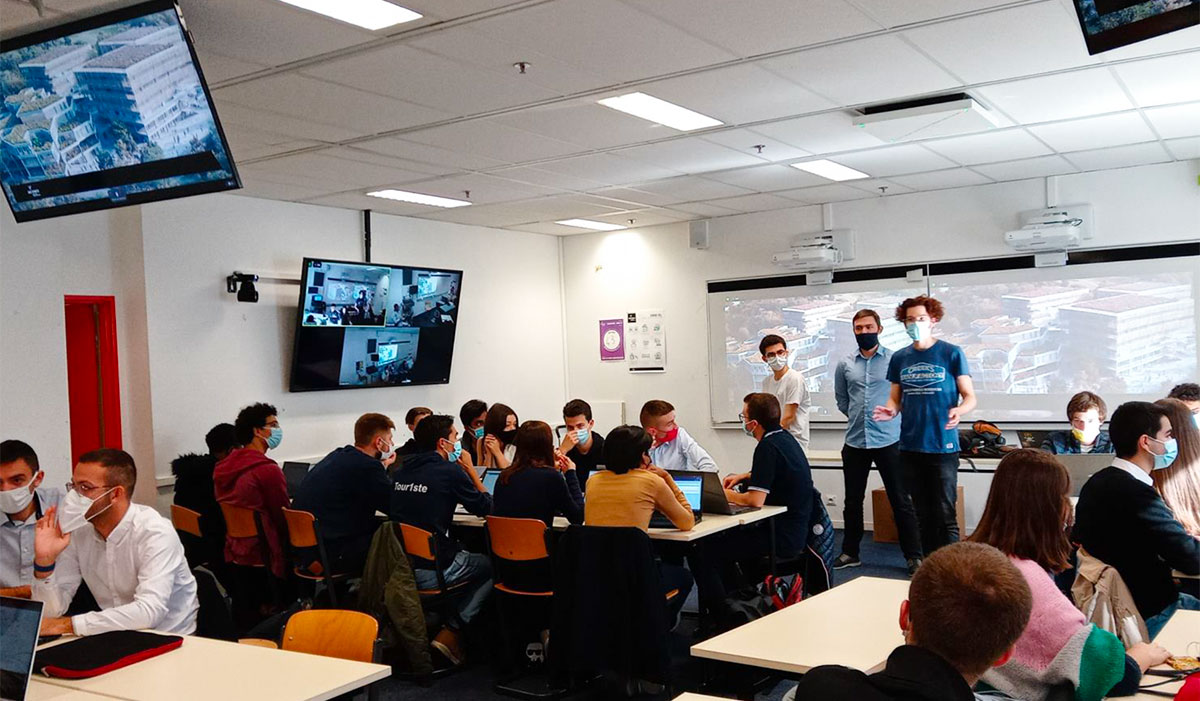The “learning-by-doing” method inspires ESILV engineering students to design and give courses inspired by Capture the Flag challenges to their fellow students.
One sure way of perfecting a skill is to start teaching about it. With this in mind, five students in their Fourth Year of ESILV Master’s in Engineering have designed a course on project management using IoT and electronics practical skills.
ESILV students encouraged to train their peers
Anne Sounanthanam, class of 2024, Clovis Carlier, Jérémie Leibl, Corentin Chatin, Thomas Chatin, all 4 students of the class of 2023 at ESILV, are passionate about electronics and computer science.
They have designed and run a course using a project and P2P approach inspired by “Capture the flag” challenges in cybersecurity.
Under the supervision of Walter Peretti, Bérengère Branchet and Olivier Zanette, the senior engineering students set out to pass on technical skills to their third-year peers.
Learning by doing: grasp the basics in electronics and IoT
Clovis Carlier, president of DaVinciCode, who initiated the project, explains his approach.
“We were able to supervise two groups of just over 250 students, most of whom came from the engineering preparatory programs (CPGE). Most of them had a basic knowledge of algorithms, but very few were familiar with microcontroller programming.
There were four practical courses of 3 hours for 60 teams, and I divided the four courses into three main points, going even further than what we had already covered during the initial cycle at ESILV:
- Basics of Arduino and microcontrollers with serial communications
- Basics of electronics
- A “deep-dive” on wifi and 2 TCP protocols: HTTP and MQTT, the latter being widely used in connected microcontrollers, or the IOT: the Internet Of Things.
Playful pedagogy inspired by the “Capture the flag” challenges
“To make these courses as fun as possible, I created a site with a “leaderboard”: a table that displayed the status (validated or not) of each team on the challenges. For each challenge, teams had to use their microcontroller to complete the challenge in a particular way.
I was thrilled to see teams pushing themselves to be the first team to validate the challenge of the practical work!
During the practical sessions, it was quite a rush because I had also added a system found in cybersecurity competitions: “first-blood” winners, meaning those who were the first to complete the challenge successfully, were highlighted from the rest of the teams that had completed the challenge. The challenges were increasing in difficulty, and only one team succeeded the last one!
Our goal in proposing this pedagogical approach was to create a fun course with a sense of challenge to draw out the students’ maximum potential.
While creating this course, I developed a lot of technical skills myself that I had the pleasure of passing on through these projects.”
This post was last modified on 23 November 2021 5:42 pm






